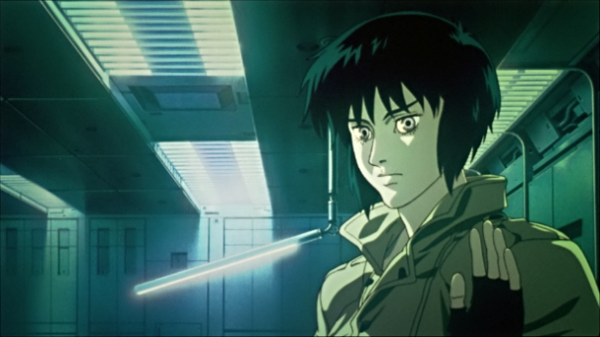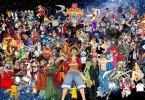In his essay “Digital Cinema and the History of a Moving Image” film theorist Lev Manovich kindles a due discourse concerning the ontology, traditional definition, and current redefining of the cinema at large as we inhabit the early years of the twenty-first century. Within his essay, he makes apparent that which was previously hegemonic—the long-held dominance of defining cinema in terms of narrative (as well as, to an even more latent degree, live action) during the twentieth century—by steering his readership both backward and forward in cinematic history. He specifically accomplishes this in several ways: identifying and classifying twentieth-century, live-action films in terms of a supergenre; highlighting the fluctuating definition of the cinema by revisiting its nineteenth-century origins (initially grounded in novelty with an emphasis on motion); and asserting the cinema’s cyclical return to said origins by connecting the ‘new’ techniques, concepts, and abilities of present-day digital filmmaking with those of not only early cinema (or proto-cinema) but elder art forms grounded in subjectivity (in contrast to objective reality), production (as opposed to reproduction), and presentation (rather than representation), namely painting. In short, Manovich illustrates these key notes of distinction for his readers in order to make several key claims concerning (digital) cinema: that it is returning to its roots; footage extracted from reality using lens-based recording technology, once digitized, loses its privileged status over artificially created images; and live-action footage—i.e. that which is grounded in actuality—is now but one option among many competing subsets of what is essentially animation (whereas animation previously existed as a largely undesirable subset of twentieth-century cinema).
While Manovich’s claims exist as both canny insight and factual revelations to those of us already well-acquainted with digital films and filmmaking of the twenty-first century, his theorizations are not all-encompassing (though it must be duly noted that he never claims this to be his objective, nor should this be a reader’s expectation of any theorist; these observations are purely for purposes of observation and additional speculatory insight). Such postulations would feel right at home encased within an analysis of a film made at the turn of the century utilizing common tools of digital filmmaking while incorporating live-action footage as raw material (e.g. George Lucas’ The Phantom Menace (1999)). For the purposes of attempting to briefly examine Manovich’s theory through a more critical lens (assuming the role of devil’s advocate more or less), and for possible clarifications to any would-be Manovich readers, let us turn our attention towards a film that, by multiple definitions, exists as one of the notable exceptions to many of Manovich’s base implications and presumptions: Japanese director Mamoru Oshii’s Ghost in the Shell (1995).
The first issue to be addressed concerns Manovich’s presumption (or rather, indirect insinuation) that after the nineteenth century and before the twenty-first, animation was distinctly separate of cinema. However, regardless of its status or perceived cinematographic value during the twentieth century, it was and is, by definition, a part of the larger edifice of the cinema as we know it. This can be said with equal validity whether using the definition of cinema as motion (animation is, of course, intrinsically in motion) or as narrative (from the cartoons of Ub Iwerks and Tex Avery to the eclectic anime works of Hayao Miyazaki, animation of the twentieth century was, like its live-action counterparts, heavily engulfed in narrative, however simple or intricate). As such, the cinema, though primarily indexical in the twentieth century was not entirely; thus phrasing such as “the manual construction of images in digital cinema [emphasis added] represents a return to the pro-cinematic practices of the nineteenth century,” and “cinema can no longer [emphasis added] be clearly distinguished from animation [and is now] a subgenre of painting,” (246) indirectly discredits the manual construction of images not in digital cinema (analog, pre-digital, hand-drawn, traditional, etc.) and implies cinema and animation were once inherently two separate entities. Ergo, the idea of the cinema returning to its proto-cinema origins via its similarities to painting carries with it the presumption that at some point cinema was innately and entirely dichotomous of painting, whereas I contend it was not: what occurred at the tail-end of the nineteenth century and majority of the twentieth was not entirely a shift in absolute, formal classification, but rather one of focus (albeit exaggerated and profound).
Second is Manovich’s association of live action with his definition of digital cinema, insofar that he seems to classify the former as a prerequisite to the latter—when in fact digital cinema is fully capable of creating images entirely through artifice, without the need of live-action footage. “Digital cinema is a particular case of animation that uses live-action footage as one of its many elements,” (250). While this is true, exceptions do exist (but again, to be fair, Manovich likely did not intend to make inclusive ‘catch-all’s’ as the necessary criteria for digital cinema). Also, in digesting Manovich’s borrowing of Christian Metz’ concept of a sur-genre (supergenre) in relation to the digital (versus Metz’ usage with narrative connotations only) it may be useful to make apparent that twentieth-century cinema and live-action cinema are not synonymous; nor is digital and the twenty-first, or digital and animation (thus the reason for our particular example, Ghost in the Shell: a non-digital, non-indexical animated work of the twentieth century).
To reiterate, while lacking in neither credibility nor fidelity, it can be argued that Manovich’s revealing commentaries on the past and present—and in a speculatory sense, future—status of the cinema are potentially weakened or altogether misinterpreted when absolutes are installed in place of exceptions, norms, or even overwhelming majorities (“digital film=live action material + painting + image processing + compositing + 2-D computer animation + 3-D computer animation,” (249)). These inferences and observations are not meant to delegitimize Manovich’s argument, nor are they intended to destroy any potential viewing experience with his accompanying theories at the forefront of a contemplative viewer’s mind: rather, they are intended to be reminders that these observations (specifically Manovich’s, but anyone else’s for that matter) are meant to be ingested with one’s own discernment. These claims, however phrased, are intended to be understood not as hard-and-fast rules, but as factual norms associated with cinema’s history (like the fact that twentieth-century cinema was indeed primarily live action, story-based, etc.) and like all norms, exceptions do exist. By discovering and subsequently re-evaluating Manovich’s keen and fervent analyses of cinema—digital or otherwise—the exciting prospects and future possibilities of cinema in the twenty-first century and beyond are made all the more comprehensible to everyone.
© 2015
Works Cited
Manovich, Lev. “Digital Cinema and the History of a Moving Image.” The Film
Theory Reader. Ed. Marc Furstenau. Abingdon: Routledge, 2010. 245-254.
Print.
Originally posted here.






